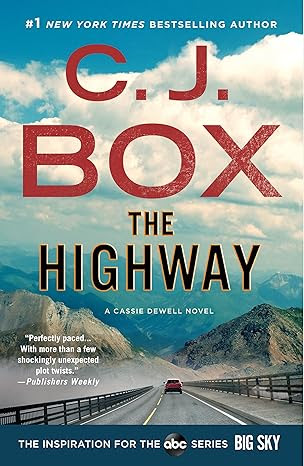FORGET the ALAMO: THE RISE and FALL of an AMERICAN MYTH (audiobook) by Bryan Burrough, Chris Tomlinson and Jason Stanford
Published in June of 2021 by Penguin Audio.
Read by Fred Sanders.
Duration: 12 hours, 15 minutes.
Unabridged.
Forget the Alamo is the second book that I have read because a governor took steps to keep people from hearing about the book. The story of the first is detailed here.
Duration: 12 hours, 15 minutes.
Unabridged.
Forget the Alamo is the second book that I have read because a governor took steps to keep people from hearing about the book. The story of the first is detailed here.
In the case of this book, the Governor and especially the Lt. Governor of Texas had an event featuring a discussion of this book removed from the Bullock Texas State History Museum in Austin, Texas. They acted in early July of 2021 because they were not happy about how it questioned the way the history of the Alamo (in San Antonio, Texas) is traditionally taught at the Alamo itself and in textbooks, classrooms, movies and books. Here is the text of the Lt. Governor's Tweet from July 2, 2021: "As a member of the Preservation Board, I told staff to cancel this event as soon as I found out about it. Like efforts to move the Cenotaph, which I also stopped, this fact-free rewriting of TX history has no place @BullockMuseum"
The Cenotaph the Lt. Governor refers to is an empty tomb for the defenders of the Alamo since their bodies were never recovered (they were burned by the Mexican Army). There was a plan to move the Cenotaph to be more integrated with the rest of the Alamo site while rehabbing it and updating the list of Alamo defenders. This topic is also discussed in the book.
Speaking of the book, I must thank these two gentlemen because without them I never would have listened to this very entertaining and very informative audiobook.
Roughly the first half of the book is about the settlement of Texas by Spain, Mexico and American who moved in and agreed to become Mexican citizens. They talk about how slavery became a major point of contention after the Mexican War of Independence (1810-1821) because Mexico had every intent to outlaw slavery.
The authors detail how Stephen Austin went to Mexico City for more than a year to lobby for Texas to have special rights. The authors emphasize how he receeived special concessions for Texas and its slaves. This was critical because so many Americans moved into Texas after this point with slaves. The American states neighboring Texas were being filled up with cotton plantations that had to be worked by slaves to be profitable (at least that was the common belief) and Texas showed great promise as a cotton-growing state.
The Cenotaph the Lt. Governor refers to is an empty tomb for the defenders of the Alamo since their bodies were never recovered (they were burned by the Mexican Army). There was a plan to move the Cenotaph to be more integrated with the rest of the Alamo site while rehabbing it and updating the list of Alamo defenders. This topic is also discussed in the book.
Speaking of the book, I must thank these two gentlemen because without them I never would have listened to this very entertaining and very informative audiobook.
Roughly the first half of the book is about the settlement of Texas by Spain, Mexico and American who moved in and agreed to become Mexican citizens. They talk about how slavery became a major point of contention after the Mexican War of Independence (1810-1821) because Mexico had every intent to outlaw slavery.
The authors detail how Stephen Austin went to Mexico City for more than a year to lobby for Texas to have special rights. The authors emphasize how he receeived special concessions for Texas and its slaves. This was critical because so many Americans moved into Texas after this point with slaves. The American states neighboring Texas were being filled up with cotton plantations that had to be worked by slaves to be profitable (at least that was the common belief) and Texas showed great promise as a cotton-growing state.
Mexico formally abolished slavery in 1831.
When the Mexican dictator Santa Anna led an army to Texas to stop the Texas Revolution (1835-1836), he announced that he would stop Texas' attempt to secede and he would also free its slaves.
The authors linger on the slavery point for a while and I think they give solid historical reasons for doing so. They do not make the point that I will make now - Texas seceded from 2 different countries in 26 years in an attempt to protect slavery (1835 and 1861).
Their description of the battle itself is very good. By the way, the church that makes up most of the focus of the current Alamo site was not a part of the battle.
The authors switch gears for the rest of the book and focus on the place of the Alamo in national memory and how it has been honored and taught over the years. Their look at how movies and books have told the story of the Alamo was very interesting.
They are particularly critical of the fact that, over time, the contributions of non-white people to the Texas Revolution and the defense of the Alamo have been dropped out of the story and the whole thing has become a story of only white people fighting back against an army of non-whites. There were "Tejanos" or native Mexicans that fought against Santa Anna for a variety of reasons, but it is rarely taught this way. They quote several book and, even more importantly, textbooks and official state curriculum guides.
The politics of managing the Alamo as a historical site gets a lot of attention in the book as well. There have been a lot of arguments about how to do that and that continues up to this day (see the Tweet quoted above).
The book ends with a look at the Alamo-related collection of Phil Collins. Yes, Phil Collins the English singer. Collins has an impressive collection of legitimate items from the Alamo and the Texas Revolution. He has an even more impressive collection of items that have been doctored or copies of items that he believes are the real thing. Collins wants to donate all of it to a museum dedicated to his collection - if Texas politicians can get their act together.
Ironically, the controversy caused by the Governor and the Lt. Governor would have fit in perfectly with the theme of this book and I hope that they offer an updated edition in the future with their book included.
The authors linger on the slavery point for a while and I think they give solid historical reasons for doing so. They do not make the point that I will make now - Texas seceded from 2 different countries in 26 years in an attempt to protect slavery (1835 and 1861).
Their description of the battle itself is very good. By the way, the church that makes up most of the focus of the current Alamo site was not a part of the battle.
The authors switch gears for the rest of the book and focus on the place of the Alamo in national memory and how it has been honored and taught over the years. Their look at how movies and books have told the story of the Alamo was very interesting.
They are particularly critical of the fact that, over time, the contributions of non-white people to the Texas Revolution and the defense of the Alamo have been dropped out of the story and the whole thing has become a story of only white people fighting back against an army of non-whites. There were "Tejanos" or native Mexicans that fought against Santa Anna for a variety of reasons, but it is rarely taught this way. They quote several book and, even more importantly, textbooks and official state curriculum guides.
The politics of managing the Alamo as a historical site gets a lot of attention in the book as well. There have been a lot of arguments about how to do that and that continues up to this day (see the Tweet quoted above).
The book ends with a look at the Alamo-related collection of Phil Collins. Yes, Phil Collins the English singer. Collins has an impressive collection of legitimate items from the Alamo and the Texas Revolution. He has an even more impressive collection of items that have been doctored or copies of items that he believes are the real thing. Collins wants to donate all of it to a museum dedicated to his collection - if Texas politicians can get their act together.
Ironically, the controversy caused by the Governor and the Lt. Governor would have fit in perfectly with the theme of this book and I hope that they offer an updated edition in the future with their book included.
Once again, I seriously want to thank the Governor and the Lt. Governor for leting me know about this book. It was excellent.
I rate this audiobook 5 stars out of 5. It can be found on Amazon.com here: FORGET the ALAMO: THE RISE and FALL of an AMERICAN MYTH by Bryan Burrough, Chris Tomlinson and Jason Stanford.
I rate this audiobook 5 stars out of 5. It can be found on Amazon.com here: FORGET the ALAMO: THE RISE and FALL of an AMERICAN MYTH by Bryan Burrough, Chris Tomlinson and Jason Stanford.












Comments
Post a Comment